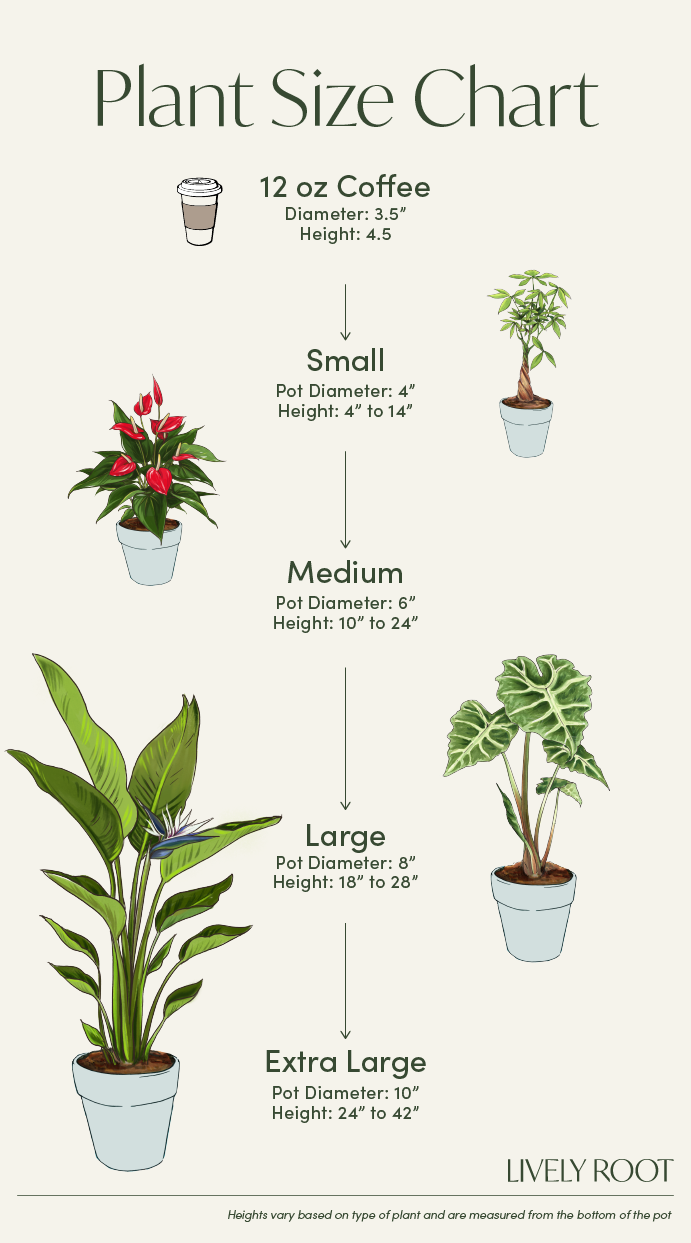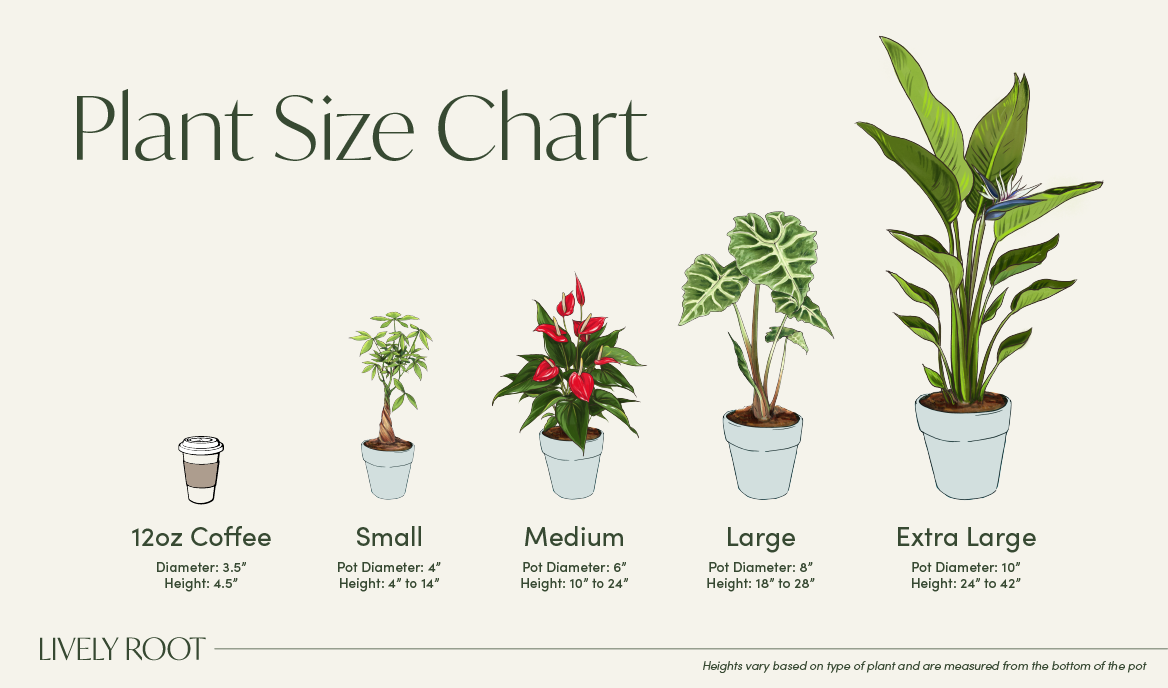

Your new favorite colorful succulent!
An easy-to-grow, long-blooming succulent, Calandivas are a mainstay of just about any low care space that wants a splash of color! They love bright, natural light without much direct sun. Since it's actually a succulent, their fat, fleshy leaves don't want to be watered all the time. Instead they prefer less frequent waterings (and a little more when they're flowering).
You will receive a surprise beautiful color from our collection!
Calandiva Plant Care Guide & Presentation

Bright, indirect light to filtered sun.
Allow the soil to dry out completely between waterings.
Doesn't require additional humidity.
Avoid fluctuations in temperature keeping them away from drafts.
Outside: Grow in partial shade (4-6 hours) where nights are above 60°F.
Indoors: This plant prefers bright, indirect light for at least six hours in a southern, eastern and western windows.
Fertilize bimonthly during their growing period while the flower is in bloom. Use a balanced liquid fertilizer at 1/2 strength. Reduce during the fall and winter months while the plant is in their dormant phase.
Repot Kalanchoe in the early spring in a well draining succulent and cacti soil mix. Use a container with drainage holes. Place a piece of screening at the bottom of the container over the drainage hole to secure the soil and allow it to drain. Add the mix to the bottom of the new slightly larger container and carefully place them in the center, adding backfill around the edges. Leave a 1/2 inch of space between the soil and the top edge to prevent water spillage. Water as instructed and fertilize with succulent/cacti fertilizer.
After the flowers fade, trim off the flower stem or any damaged or yellowing leaves. Clean off any debris on the soil and refresh with new soil if needed. Inspect for pests at this time.
Trim a cutting off the plant where they are not flowering, making sure they have at least four to five leaves on them. Remove two to three sets of leaves off the stem with sterile scissors. Allow the stem to callous over for two to three days. This period will protect the new plant from diseases and rotting. Next, take the cutting and dip them in rooting hormone. Use a succulent and cacti mix, and fill the container you're using. Poke the cuttings in the soil and water. Now, create a humidity chamber by spritzing a clear plastic bag and dropping it over the new plant and container. Place the cuttings in bright, indirect light. Keep the soil moist while the cuttings establish roots and leaf growth occurs.
Calandiva Plant: Overview
The Calandiva is a compact succulent plant with fleshy leaves and brightly colored, long-lasting blooms. It’s a double-flowering cultivar of Kalanchoe blossfeldiana developed in 1998. Its flowers are fluffy and rose-like, which gave it the name Double Kalanchoe, and they come in a range of gorgeous colors, like coral, red, pink, magenta, yellow, and cream.
This attractive, tough plant can adapt to outdoor conditions in hardiness zones 10-11, making it a popular plant for your porch. The Calandiva plant is ideal for sunny spaces, as it thrives in bright, indirect light. This beautiful succulent is easy to care for, so much so that it's one of the best flowering plants for beginners. It doesn’t require a lot of water or extra care, producing amazing flowers that bloom for months. One thing to be aware of is that this lovely plant is toxic to pets when ingested.
Calandiva symbolizes prosperity and good fortune in Asian cultures and is often used to decorate Chinese New Year festivities. Because of their long-lasting blooms, the Calandiva flowers are also associated with love and enduring affection, which makes these plants a wonderful gift.
Calandiva Plant: Benefits
- An air-purifying plant that cleanses the surrounding air
- Symbolizes prosperity and love
- Abundant bloomer with bright, lasting flowers
- Compact tabletop office plant
- An easy-to-care-for succulent
Kalanchoe vs. Calandiva
The number of petals is what differentiates the two plants. A Kalanchoe vs. Calandiva flower comparison will show that the Calandiva flower has extra petals, which make it fluffier than the regular flowering Kalanchoe. The Calandiva flowers have 32 petals compared to the Kalanchoe, which has only four.
The Kalanchoe flowers are normally red, pink, white, or yellow, whereas the Calandiva varieties come in multiple colors, including orange and purple.
Calandiva Plant: Care Guide
Kalanchoe Calandiva is an undemanding succulent. Just follow these Calandiva care tips:
Watering and Humidity
Avoid overwatering your Calandiva. These plants are drought-tolerant, storing water in their leaves like other succulents, and excessive watering can harm them. Your Calandiva doesn’t require any extra humidity. It’s not a good choice for humid indoor spaces like bathrooms.
Light and Temperature
Place your Kalanchoe Calandiva in a brightly lit location, where it will receive 6-8 hours of indirect sunlight daily. Keep it in partial shade outdoors, with 4-6 hours of light exposure. These tropical plants prefer warm temperatures of 64℉ - 68℉. Keep them away from cold drafts.
Soil, Feeding, and Repotting
The best choice of soil for Calandiva plants is a well-draining succulent and cacti potting mix. Repot your plant into a slightly larger pot in the spring or when it gets rootbound. When repotting, always use a container with drainage holes so water doesn’t get trapped at the bottom of the pot, causing root rot. Use a succulent and cacti fertilizer for your Calandiva during the growing season.
Propagation
One of the Calandiva plant's benefits is its ease of propagation. Take stem cuttings with four to five leaves on them and leave them to form a callous over the cut for several days. This will prevent infection and disease. Dip the cuttings in root hormone and plant them in moist soil. Place the cuttings in bright, indirect light and keep the humidity levels up.
Pruning, Cleaning, and Common Issues
An important part of Calandiva plant care is removing the wilted blossoms, and flower stems after flowering. This will keep your plant neat and encourage it to form new blooms. Keep the soil around your plant clean, and add new soil if necessary. If your plant’s stems grow leggy, trim them after flowering to keep your Calandiva bushy. Crispy brown leaf tips indicate underwatering, while soft, yellow, or discolored leaves usually indicate overwatering.
Calandiva Plant: Placement, Companion & Alternative Plants
Calandiva is one of the best indoor plants for adding color and vitality to your living space.
Best Locations & Uses
- Great bedroom plant because it improves air quality
- A colorful and cheerful gift
- Perfect for plant lovers with no pets
- It can grow as a porch plant in warmer and drier climates
- An ideal blooming plant for novice gardeners because of its easy-care needs
Companion Plants
Enjoy your colorful Calandiva by itself or group it with other small plants to create a refreshing tabletop plant display in your home or office:
- Lemon Button Fern (Nephrolepis cordifolia 'Lemon Buttons'): With its airy light green fronds, the Lemon Button Fern is an enchanting little plant that is easy to care for.
- Ponytail Palm Tree (Beaucarnea recurvata): Quirky and fun, the Ponytail Palm has a thick trunk sprouting a crown of long, curved leaves that resemble a flowing fountain.
- Blooming Superba Double Begonia (Begonia tuberosa): If you want a spectacular floral display, the double-blooming Blooming Superba Double Begonia is the perfect choice.
Alternative Plants
Since Calandiva plants are toxic to cats and dogs when ingested, pet owners can take a look at our selection of gorgeous pet-friendly plants, including:
- Tropical Delight Guzmania Bromeliad (Guzmania Bromeliad): A pet-safe flowering plant, the Tropical Delight Guzmania Bromeliad is an epiphyte that requires little extra care and thrives in bright, sunny locations.
- Tuscan Blue Rosemary (Rosmarinus officinalis): Not only is it a popular herb for cooking, but the pet-friendly Tuscan Blue Rosemary also produces attractive blue flowers on its fragrant stems.
- Spider Plant (Chlorophytum comosum): The bushy and pet-safe Spider Plant produces tiny star-like flowers, making it a perfect plant for hanging baskets.
Get a Beautiful Calandiva Flower From LivelyRoot Today!
Brighten your living space with a long-flowering, colorful Calandiva from Lively Root to lift your mood!




























